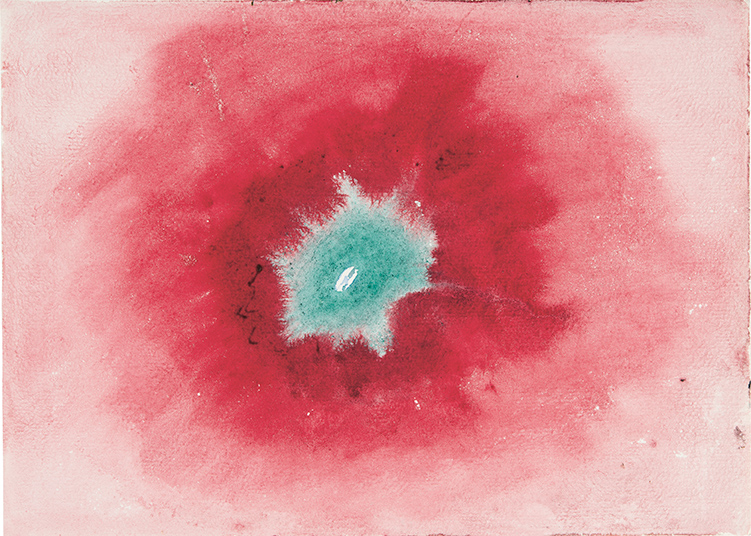Geometric Series and Watercolors (1920–22)
Gallery 202
Between 1917 and 1920, Hilma af Klint’s works underwent a transitional period, coinciding with her closer interest in Rudolf Steiner’s theories, which culminated in her first trip to Dornach, the headquarters of the Anthroposophical Society, which the artist joined in 1920 shortly after the death of her mother, whom she had spent years caring for.
In the Series II (1920), af Klint addressed the interrelation of different religions. The paintings became increasingly colorful; circles and crosses orbit and collide with larger geometric shapes, which the artist often executed using a ruler and compass to draw. With these diagrammatic images, af Klint continued trying to make the invisible visible, connecting the latent forces of nature and the forms they may adopt.
Influenced by the exercises prescribed by Steiner—who believed that close contemplation of the natural world would allow its expressive colors to be captured and allow one to experiment the spiritual realm—af Klint drastically changed her artistic approach in 1922. This shift can be seen in On the Viewing of Flowers and Trees, a set of watercolors of botanical forms, in which she strove to portray nature’s invisible dynamics. The artist used a wet-on-wet technique, in which she prepared the paper with a water-soaked sponge and then let the watercolors run freely, allowing the colors to create the subject matter.

